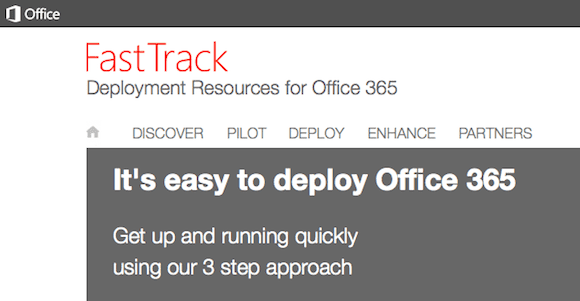The Microsoft Exchange Conference (MEC) 2014 in Austin, Texas, from March 31 – April 2, was the event to attend if you’re an Exchange administrator looking for the latest information about anything and everything related to Microsoft’s popular email server platform. However, if you missed MEC and are interested in learning more about some of the buzz around Office 365, this article will provide you with some highlights. You should also check out what my fellow Petri IT Knowledgebase contributor J. Peter Bruzzese has to say about the conference in his post about MEC 2014 highlights.
Evolution of Exchange Administration
Throughout MEC, Microsoft put some effort towards debunking the notion that moving to Office 365 would put Exchange administrators out of a job. The trend that companies are seeing is that this is not true. If you step back and look at the history of IT, it is an ever-evolving industry of change. For example, when IT first started, every server in the datacenter was physical, but today many servers are virtual. While the hardware in our data centers might be fewer in number and running more virtual workloads, smart and talented IT professionals are spreading their wings and learning the new technologies that revolve around virtualization. The same is to be expected of those Exchange administrators whose organizations move away from on-premise Exchange to off-premise Office 365.
With Office 365 you will still have a job and have similar work to perform. For example, for Office 365 you will need to configure the environment, control your user access, setup rules and site-related configurations, manage external mail flow and sharing policies, maintain your system-related end points and manage user communications. This is still a significant amount of work. Additionally, it is anticipated that Exchange administrators will have more time to assist with Exchange-related technical decisions for SharePoint, Lync, and even Active Directory. Similar to the larger evolution of IT, the uptake in Office 365 adoption will give Exchange Administrators a chance to learn some new things and allow their IT skill sets to grow.
Microsoft Office 365 Fast Track Deployment Guide
Another MEC highlight from Microsoft is that they have listened to their customers are working hard to help customers simplify what it means to move to Office 365. For example, you could take a look at the Microsoft Office 365 Deployment Guide, which is a very large document about implementation, but the documented process wasn’t clear and simple. Based upon customer feedback, they have developed a new Office 365 deployment model they’ve dubbed “Fast Track.” This concept exposes the customer to the product in the most simplistic manner possible and is fully documented on the Microsoft Fast Track Office 365 deployment website.
The Microsoft ‘Fast Track’ deployment resources guide website for Office 365 (Source: Microsoft)
Fast Track focuses on starting simple and then moving to the complex. Their model in a nutshell is to pilot, deploy, and then enhance your Office 365 services.
- Pilot – Try out Office 365 without changing your infrastructure. This would typically involve trying the product with the Microsoft Azure backend for authentication by creating a cloud identity for your organization.
- Deploy – The deployment phase expands into “what does it mean to involve my organizations IT department” and integrates it with what your organization already has in-house. For example, if you are going to use your own Active Directory, then an in-house server will need to be brought online for a tool called DirSync. This tool will synchronize on-premise Active Directory with Office 365. Other deployment considerations are how your IT department will lead this migration, password sync, admin migrations, and more.
- Enhance – Once you have deployed Office 365 you will need to determine whether you are going to configure the more advanced features. These include federated identity, Exchange hybrid, exchange online archiving, Sharepoint or Lync Hybrid, and more. At a glance, it is apparent that Microsoft has taken efforts to simplify the process to better allow customers to try out this technology.
Office 365 Questions to Ask Yourself
My own thoughts and observations based upon the Office 365 options discussed at MEC 2014 revolve around the fact that every organization is different. There are many organizations that will successfully work through the new Fast Track process with ease, but for other organizations simplification will not be possible. Of course, there are variables such as size of organization and other system-related integrations for current Exchange On-Premise deployments.
Here is a list of some Office 365 considerations:
- How much system integration do you currently have in place that relies on an Exchange on-premise deployment, and what it will take to move those integrations if they can be?
- What are your uptime requirements for Exchange?
- Do you use with a third-party Unified Messaging product?
- What are your compliance requirements?
- Will you use a hybrid environment with online archiving?
- Will I only have certain users that use Office 365 and some on Exchange on-premise?
- What are my use cases based upon my Fast Track pilot?
- If am going to do a Hybrid Deployment, will I upgrade to Exchange 2013 for simplification?
- Do I have public folders to be moved to Office 365?
- Do any of these questions apply to my organization?
These considerations are not a list of deterrents. The answers to these questions can provide your organization additional insight into what it means to move your on-premises Exchange deployment to Office 365.




